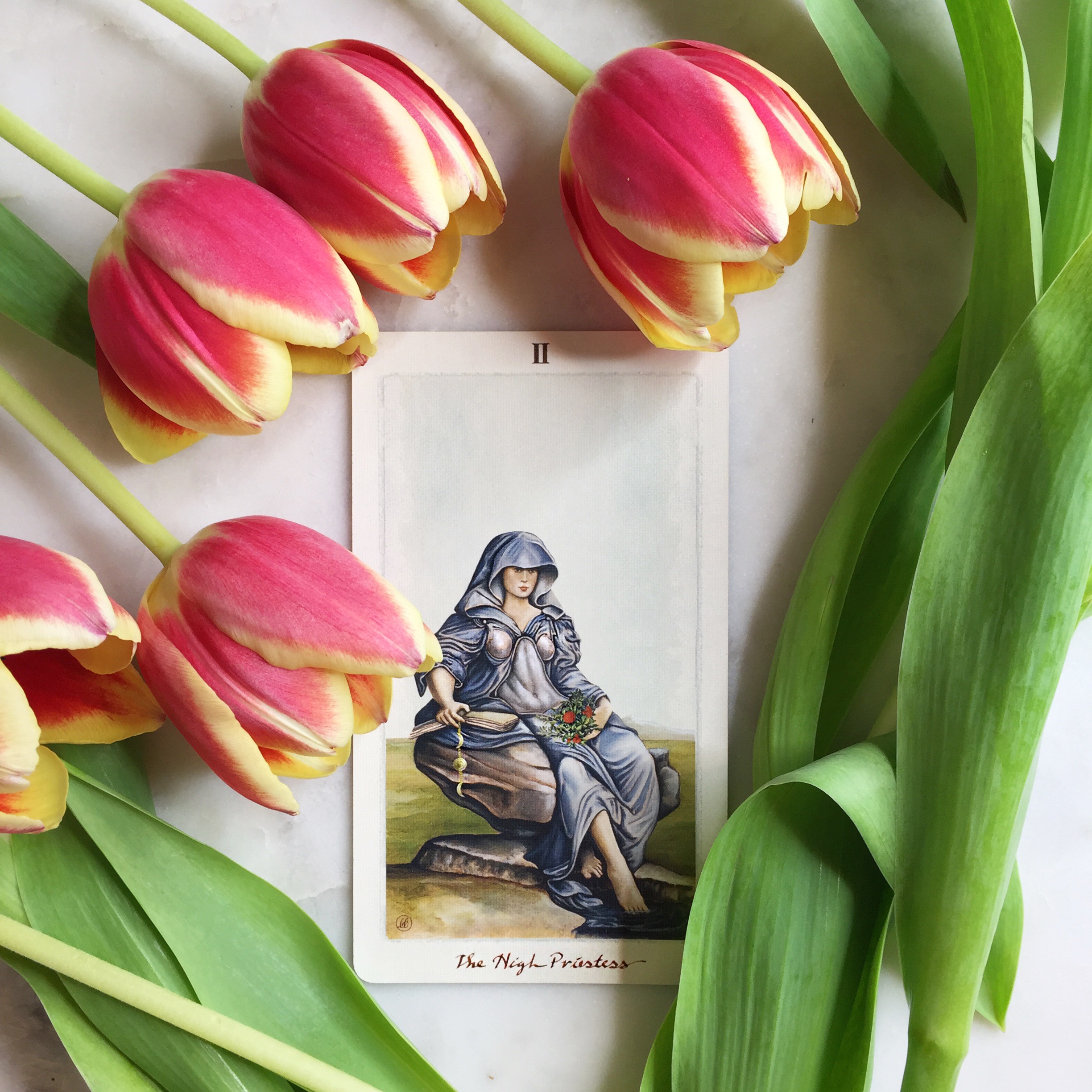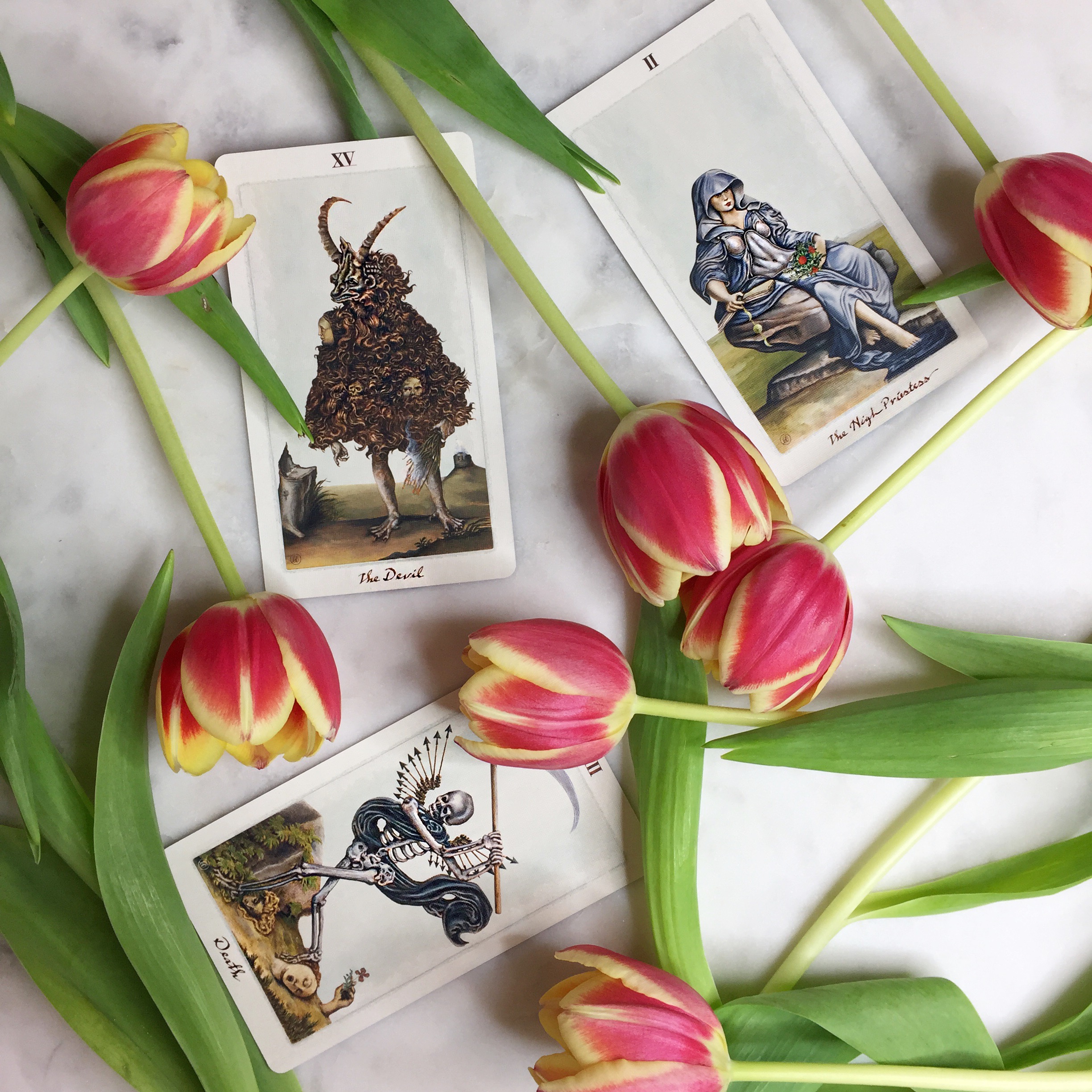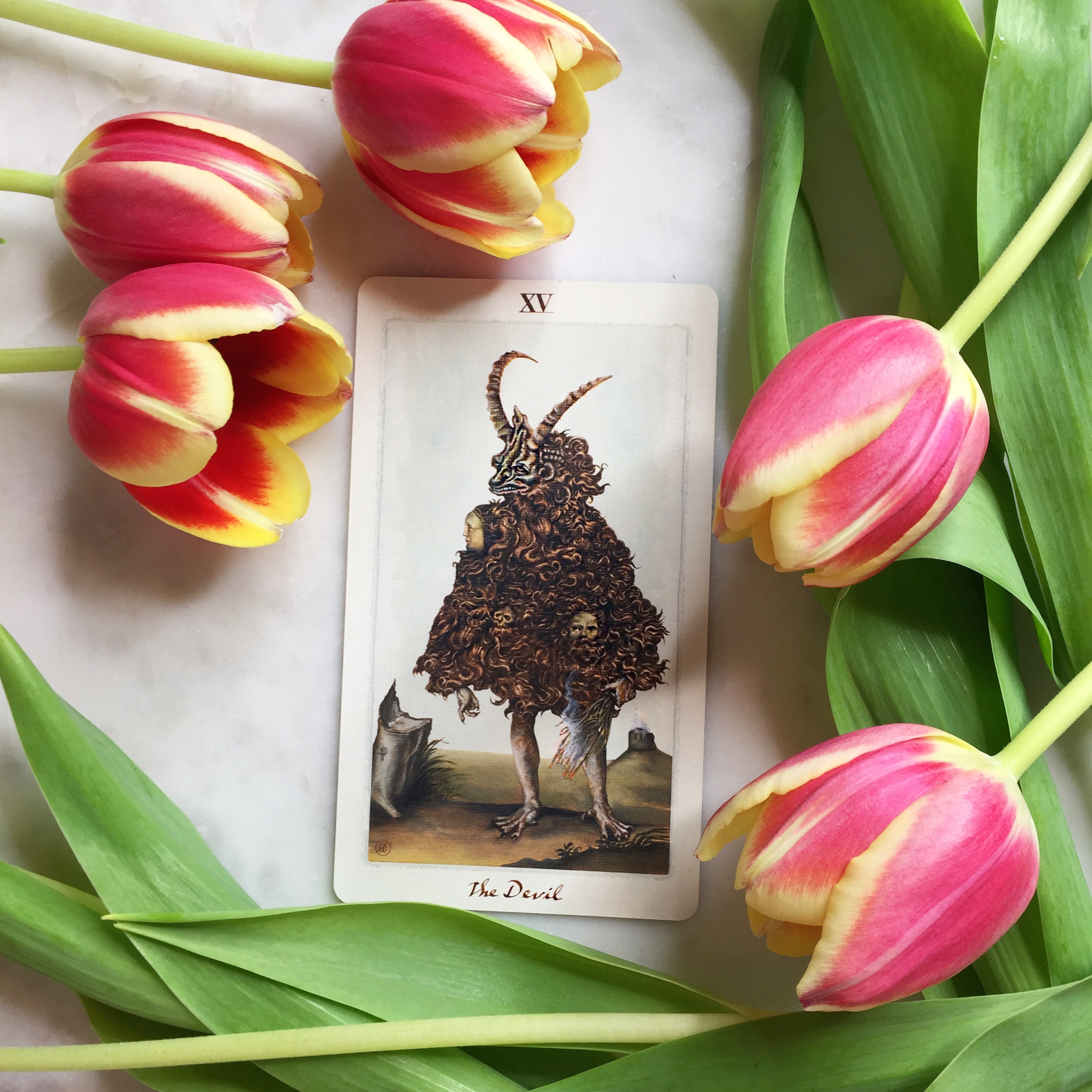Uncovering the Meaning of Tarot with the Pagan Otherworlds Deck
Capturing the elegance and majesty of renaissance painting, the Pagan Otherworlds deck captivates and charms even the most discerning divinator. The artistic shading and colors bring to mind the frescos of El Greco and the postures reflect the drama of a captivating Caravaggio. These cards beg to leap from their deck and be framed upon the wall to be admired by passerby. A contemplative symbolism nestled within each card alludes to Raider-Waite conventions, yet departs occasionally to create an immersive world where Pagan traditions collide with a Renaissance regal aesthetic.
I’d like to express the artistic and symbolic excellence by describing my three favorite cards within this deck: The High Priestess, Death, and The Devil.
The blue hues in the High Priestess card mimic the all too familiar shroud of the Virgin Mary. Yet the priestess reflects a deep female mysticism that is often lacking in modern interpretations of the Virgin. Her blue cloak clings to her body, a reminder that her femininity is not something to be hidden, but is indeed the very source of her power. Here the High Priestess is studious, with a book of mysteries upon her lap as she sits relaxed upon her stone throne. Her feet dwell in the rivers of the subconscious and symbols of the moon twinkle betwixt her fingertips. Her face is beautifully calm with the assured gaze of a Botticelli Venus. An inspiring depiction of the innate majesty of female power, intelligence, and magic.
A much different macabre aestheticism presents itself within the Death card. Death valiantly strides forward, his ever-present scythe at the ready. Evidence of destruction already wrought lies in the form of human heads beneath his feet. His posture fills the space as his blue cloak swirls along his skeletal frame, creating a cohesive composition. Emanating from his spine are rows of arrows in the form of wings. His menacing war-wings cast a stark departure from the beautiful feathered wings that appear elsewhere in the deck. Hope comes in the form of a delicate flower following his trail, a reminder that new beginnings always follow destruction.
The Devil card is often a challenge for contemporary tarot artisans. A delicate balance must be struck by maintaining the symbolism yet avoiding cliche. Our Pagan Otherworlds Devil departs from his smoking hellscape to join our world of the living. An uncanny masked face brings to mind the complex bestiary of Hieronymus Bosch. His hair-suit and animal horns allude to costumes worn during Pagan ceremonies still performed today in Europe. Human heads again appear within this card. Though instead of decomposing at the creatures’ humanoid feet, they are attached to his matted suit. It’s as if they have lost all independence and have become mere parasites to their lascivious host. This unique interpretation references devil imagery found in other tarot decks, but does so delicately. Instead of roaring flames and heavy chains, this Devil card conveys its warnings with a lighter, yet still poignant, symbolism.
The Pagan Otherworlds deck adds to the ever growing aesthetic integrity of the Tarot community. Tarot is unique from other artistic mediums in that it does not simply passively contain archetypes and symbolism. These concepts are activated and molded into our own lives through their use in readings. While tarot can be appreciated by its aesthetics alone, it is the action of their use that uncovers its true value. As we interact with the cards we attach our own narratives to their original interpretations and thus create a continuously evolving realm of meaning and inspiration. Tarot cards are a tool and their imagery is our guide. Yet it is our own intuition that transforms the cards from physical objects into channels where we can glimpse within the depths of our subconscious and beyond into the realms of the greater unknown.
This review is not sponsored by Pagan Otherworlds or their parent collective of artisans, Uusi.
What are your own opinions of this deck? Do you have a different interpretation of what tarot means to you? Let me know in the comments below.
If you're interested, you can click below to learn more about the tarot readings I offer.






